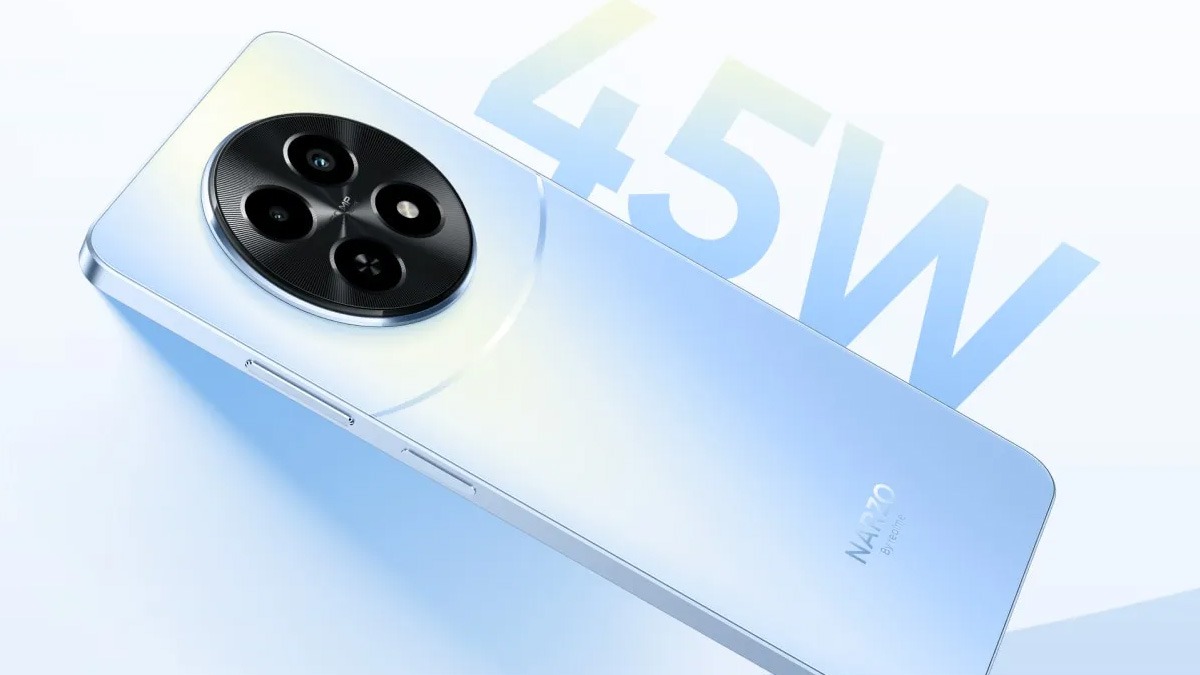Just In
- 49 min ago

- 54 min ago

- 1 hr ago

- 1 hr ago

Don't Miss
- Movies
 Devara Part 1: Jr NTR To Groove With Pooja Hegde In Janhvi Kapoor-Starrer Actioner For A Special Song; Details
Devara Part 1: Jr NTR To Groove With Pooja Hegde In Janhvi Kapoor-Starrer Actioner For A Special Song; Details - Sports
 ONE Friday Fights 59 Results: Yamin Beats Ouraghi In Freak Stoppage, Yodthongthai Topples Petnamngam
ONE Friday Fights 59 Results: Yamin Beats Ouraghi In Freak Stoppage, Yodthongthai Topples Petnamngam - News
 Bengaluru Traffic Alert: Avoid These Roads On April 20 Between 1 PM To 7 PM
Bengaluru Traffic Alert: Avoid These Roads On April 20 Between 1 PM To 7 PM - Lifestyle
 Mahavir Jayanti 2024: Date, Time, History, Celebrations And Teachings Of Lord Mahavir In Jainism
Mahavir Jayanti 2024: Date, Time, History, Celebrations And Teachings Of Lord Mahavir In Jainism - Automobiles
 Ford Mustang 60th Anniversary Package – Limited To Just 1,965 Units
Ford Mustang 60th Anniversary Package – Limited To Just 1,965 Units - Finance
 Daily Relative Strength Index RSI In A Bullish Mode of This Pharma Stock; Buy For TP Rs 635-685
Daily Relative Strength Index RSI In A Bullish Mode of This Pharma Stock; Buy For TP Rs 635-685 - Education
 Exam Pressure Does Not Exist; Studying Punctually is Crucial; Says Aditi, the PSEB 2024 Topper
Exam Pressure Does Not Exist; Studying Punctually is Crucial; Says Aditi, the PSEB 2024 Topper - Travel
 Journey From Delhi To Ooty: Top Transport Options And Attractions
Journey From Delhi To Ooty: Top Transport Options And Attractions
Tensor G2 Is a 5nm Processor Just Like Its Predecessor: How Is It Different?

Google's latest flagship smartphones -- the Pixel 7 and the Pixel 7 Pro draw power from the in-house Tensor G2 processor, co-developed by Samsung. Several reports claimed that the Tensor G2 is fabbed by Samsung using a 4nm process. However, a Google spokesperson has confirmed otherwise, stating the Tensor G2 is fabbed using a 5nm process.
As of now, there is no clear information if the Tensor G2 is based on Samsung's 5LPE or if it is using the slightly improved 5LPP manufacturing process. In either case, the power efficiency difference between the two devices will be very negligible.
Official statement from Google's Spokesperson
"We purpose-built Google Tensor G2 for real-world use cases. Our final architecture, which includes 5nm, helped us reach that goal while increasing both performance and power efficiency. This approach also allowed us to add new capabilities while taking a step forward on machine learning with our next-generation TPU with G2"
Google Tensor G2 Details
The Tensor G2 is the latest flagship SoC from Google, which currently powers the Pixel 7 and the Pixel 7 Pro, and the same chipset will also power the upcoming Pixel Tablet. The Tensor G2 has an octa-core CPU design with two high-performance cores (Cortex-X1), two medium-performance cores (Cortex-A78), and four efficiency cores (Cortex-A55).
The SoC comes with the improved Mali-G710 MC10 GPU. Although the Tensor G2 uses the same Cortex cores as its predecessor, the Tensor G2 actually comes with a higher clock speed, delivering improved single-and multi-core performance.
Did Google Cheap-Out Or Is It A Sensible Decision?
Samsung's 4nm 4LPE node is a tried and tested manufacturing process. In fact, processors like Exynos 2200 and the Snapdragon 8 Gen 1 are actually fabbed using the same. However, these processors had some issues when it comes to heat management which can be linked to Samsung's 4nm manufacturing process.
Qualcomm hence shifted Snapdragon 8+ Gen 1 manufacturing to TSMC's 4nm process. As we have seen with the reports, the Snapdragon 8+ Gen 1 when compared to the Snapdragon 8 Gen 1 is not just powerful, but it is also power efficient.
It is possible that Google may have attempted to save a buck by manufacturing the Tensor G2 using an older 5nm node, as newer nodes are always expensive. However, we can't ignore the fact that Google might have also considered the poor thermal performance of Samsung's newer 4nm process and instead decided to use the older but reliable 5nm process to strike a balance between thermal performance and efficiency.
-
99,999
-
1,29,999
-
69,999
-
41,999
-
64,999
-
99,999
-
29,999
-
63,999
-
39,999
-
1,56,900
-
79,900
-
1,39,900
-
1,29,900
-
65,900
-
1,56,900
-
1,30,990
-
76,990
-
16,499
-
30,700
-
12,999
-
62,425
-
1,15,909
-
93,635
-
75,804
-
9,999
-
11,999
-
3,999
-
2,500
-
3,599
-
8,893












































